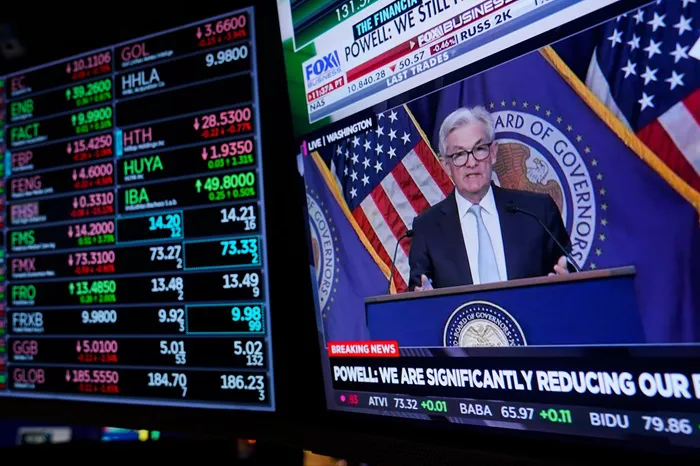As the Federal Reserve embarks on a long-awaited rate-cutting cycle, investors are cautiously optimistic but wary that the benefits of easier monetary policy may already be priced into richly valued U.S. stocks. The S&P 500 saw a surge to fresh records following the Fed’s decision to reduce borrowing costs by 50 basis points, marking the first rate cuts in over four years.
Historical Context and Market Reactions
Historically, the initial rate cuts in an easing cycle have correlated with positive market performance. According to Evercore ISI, the S&P 500 has averaged an 18% annual gain following the first rate cut, provided the economy avoids recession. Investors responded positively to the Fed’s assurances of a stable U.S. economy, driving the index up 20% this year.
Valuation Concerns Amid Economic Cooling
Despite the bullish sentiment, stock valuations have surged, leaving the S&P 500 trading at over 21 times forward earnings—well above its long-term average of 15.7 times. Analysts express concern over the potential for limited near-term upside, given that the economy is showing signs of cooling. Robert Pavlik, senior portfolio manager at Dakota Wealth Management, noted the apprehension surrounding a 20% market rise in such conditions.
Overvaluation Indicators
Further valuation metrics, such as price-to-book and price-to-sales ratios, indicate that U.S. stocks are trading at levels significantly above historical averages. For instance, U.S. equities are currently priced at five times their book value, compared to a long-term average of 2.6, which analysts at Societe Generale described as “expensive.”
Benefits of Lower Rates
Lower interest rates can positively impact stocks in several ways. They reduce borrowing costs, which can stimulate economic activity and enhance corporate earnings. Additionally, falling yields on cash and fixed income investments make equities more attractive. The benchmark 10-year Treasury yield has decreased by nearly a full percentage point since April, although it has recently seen a slight uptick.
Challenges Ahead for Valuation Expansion
Despite the potential benefits of lower rates, the S&P 500’s price-to-earnings (P/E) ratio has already rebounded significantly, making further valuation expansion challenging. Matthew Miskin, co-chief investment strategist at John Hancock Investment Management, indicated that replicating the recent multiple expansion may prove difficult in the coming years.
Earnings Growth as a Key Driver
With limited expectations for further valuation increases, earnings and economic growth are expected to play crucial roles in driving the stock market. Predictions indicate that S&P 500 earnings could rise by 10.1% in 2024 and another 15% in 2025. The upcoming third-quarter earnings season will serve as a critical test for current valuations.
Past Performance and Future Outlook
Interestingly, the S&P 500 has historically been flat in the 12 months leading up to rate-cutting cycles. However, this time, the index has surged nearly 27% in that same period, suggesting that some of the potential gains may have already been “borrowed from the future.”
Diverging Investor Sentiments
Despite elevated valuations, many investors remain optimistic about stocks. Valuations are often an unreliable indicator for timing market entries and exits, as momentum can drive stocks higher or lower long before they revert to historical averages. The forward P/E ratio for the S&P 500 was notably high during 2020 and 2021, and even reached 25 during the dot-com bubble.
Historical Performance During Rate Cuts
Historical data indicates that rate cuts near market highs tend to bode well for stocks a year later. Since 1980, the Fed has cut rates 20 times when the S&P 500 was close to an all-time high, and the index has always been higher a year later, averaging a gain of 13.9%.
Conclusion
While the Federal Reserve’s rate cuts may provide a boost to the stock market, concerns about high valuations and economic cooling temper investor enthusiasm. As earnings growth becomes increasingly vital, the market’s ability to sustain its upward momentum will depend on navigating these challenges effectively. Historical trends suggest that, barring recession, the outlook for stocks could remain positive, even in a high-valuation environment.
Related Topics:

